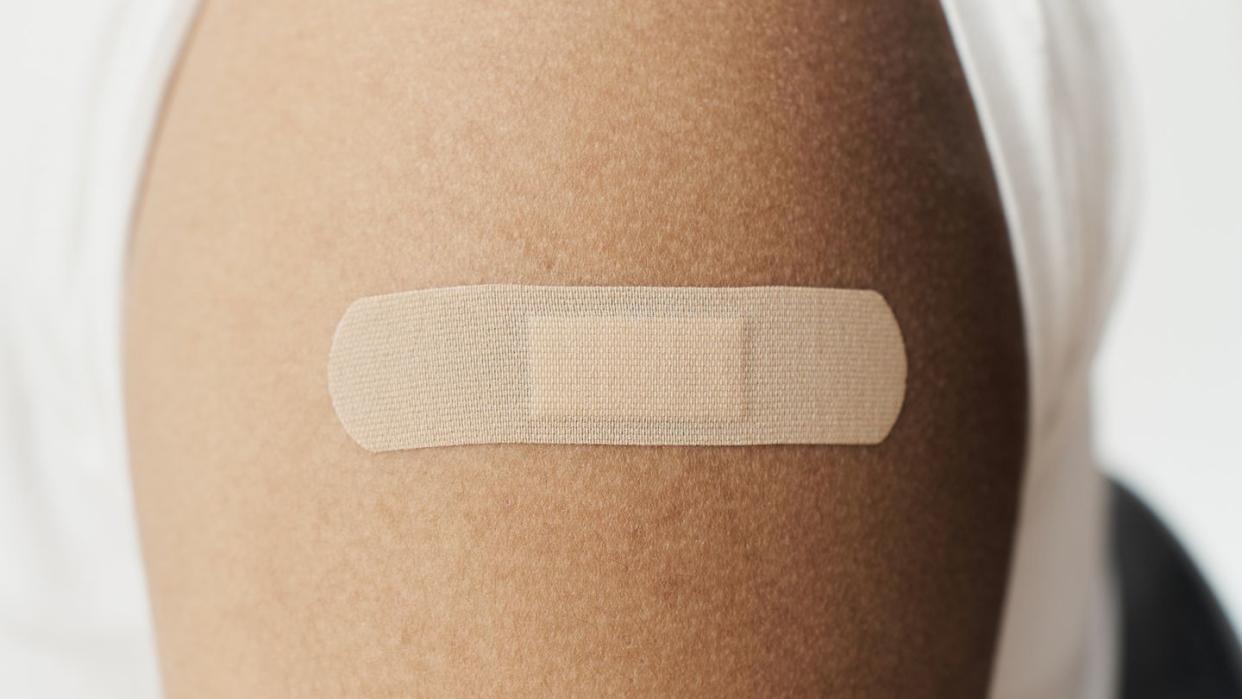Here’s What You Need to Know About Getting the New 2023 COVID Booster

[table-of-contents] stripped
Respiratory virus season is coming up fast and, with that, there’s a big emphasis on getting up to date with vaccines to protect yourself in the months ahead. One that’s getting a lot of buzz in particular is the updated COVID-19 vaccine, which was only recently approved by the Food and Drug Administration (FDA).
This vaccine is a little different from previous versions (more on that in a moment). So, it’s understandable to have questions, including “What are the COVID booster 2023 side effects?” Here’s what you need to know about the new vaccine, plus potential side effects to keep in mind.
Meet the experts: Amesh A. Adalja, M.D., is an infectious disease expert and senior scholar at the Johns Hopkins Center for Health Security; William Schaffner, M.D., is an infectious disease specialist and professor at the Vanderbilt University School of Medicine; Thomas Russo, M.D., is a professor and chief of infectious diseases at the University at Buffalo in New York.
What is the latest COVID-19 booster?
There are actually two different mRNA vaccines that can be used as a COVID booster right now: one from Moderna and another from Pfizer, according to the FDA. (An updated vaccine from Novavax just got FDA approval and should be hitting the market soon.)
These vaccines replace the previous COVID-19 vaccine that was available and target the XBB.1.5 Omicron subvariant, explains infectious disease expert Amesh A. Adalja, M.D., senior scholar at the Johns Hopkins Center for Health Security. “The vaccine no longer targets the ancestral strain spike protein,” he says. Meaning, the new vaccines focus more on what’s circulating now—not the original virus that caused COVID-19.
The new vaccines and boosters are monovalent (they target one strain of SARS-CoV-2, the virus that causes COVID-19) while the old vaccine targeted several strains, the FDA says.
There’s no clinical data right now for these vaccines, given that they’re updates of the previous booster shot, so there’s no exact percentage on how effective they are at protecting against COVID-19. That said, the Centers for Disease Control and Prevention (CDC) points out that vaccines are your best protection against being hospitalized with COVID-19 and dying from the virus.
What are the potential side effects of the new COVID-19 booster?
The new COVID vaccine and booster is an update of the previous vaccine. With that, Dr. Adalja says the potential side effects are “just like any other COVID vaccination.” According to the CDC, those potential side effects can include:
Pain, swelling, and redness on the arm where the shot was given
Fatigue
Headache
Muscle pain
Chills
Nausea
Fever
“The side effects are relatively minor and on par with other vaccines,” Dr. Adalja says.
Even though there’s a range of side effects you can experience, “the biggest potential side effect is a sore arm—and everybody doesn’t even get that,” says William Schaffner, M.D., an infectious disease specialist and professor at the Vanderbilt University School of Medicine.
Recent research has shown that nearly 32% of people who didn’t get the last booster skipped it because they were worried about vaccine side effects, but doctors say people should feel comfortable getting the vaccine.
“Nearly 700 million doses of these mRNA vaccines have gone into arms and they’ve been under the microscope,” says Thomas Russo, M.D., a professor and chief of infectious diseases at the University at Buffalo in New York. “It’s extraordinarily safe. The risk-benefit ratio by far favors vaccination.”
By the way, if you’ve been nervous about the mRNA vaccine or had a bad reaction after receiving a dose, the new Novavax vaccine is worth looking into, Dr. Schaffner says. “It’s made in a more traditional way,” he says. “It’s an alternative to consider.”
Who should get the latest COVID-19 booster?
Everyone who is six months and older should get the new COVID-19 booster, according to the CDC. However, the CDC points out that children who are six months to four years old need multiple doses of COVID-19 vaccines to be up to date, including at least one dose of the updated booster.
People who are immunocompromised may also need more than one dose, the CDC says.
Pregnant women should also consider getting vaccinated, Dr. Russo says. “After the 75+ age group, the zero- to six-month age group is the highest risk for bad outcomes from COVID and they can’t get the vaccine,” he says. “The only way they can get protected is if mom gets the shot. If mom is vaccinated and chooses to nurse, they can get the antibodies that way, too.”
When is the best time to get the new COVID-19 booster?
While timing is often a factor with the flu vaccine to try to ensure you have antibodies that last through the flu season, Dr. Russo says that’s not really a concern with the COVID-19 booster.
“There’s a moderate amount of COVID out there right now,” he says. “I like to spread the flu and COVID vaccine out by a couple of weeks, so I would say get the COVID vaccine now and the flu vaccine before Halloween.” However, he points out, you can get both vaccines at the same time—you just have a slightly greater risk of side effects if you go this route.
Ultimately, what matters is that you get the vaccine, Dr. Russo says. “Everyone is at risk for getting serious disease from COVID—there is no zero-risk group,” he says. “The vaccine can help.”
You Might Also Like
